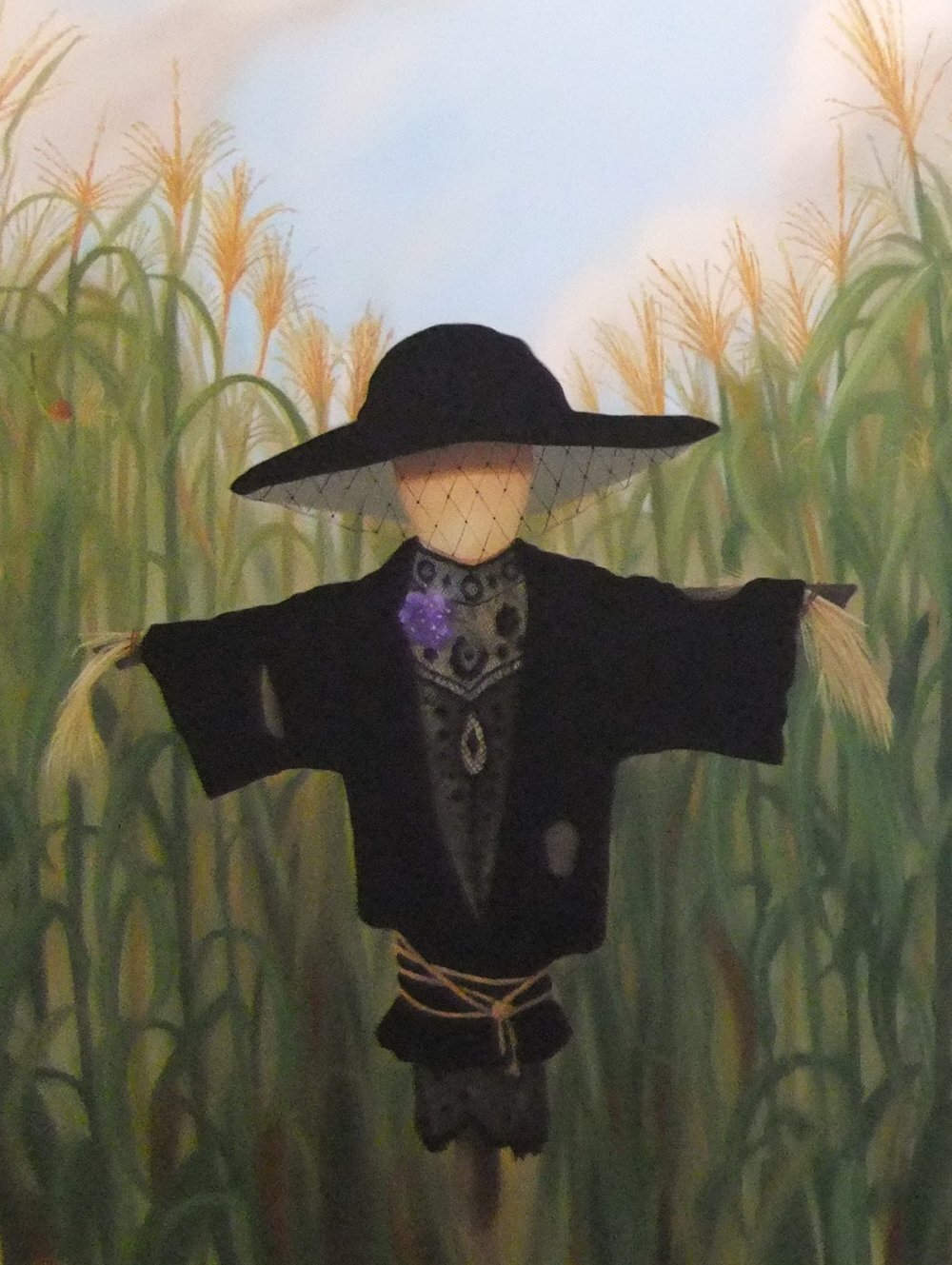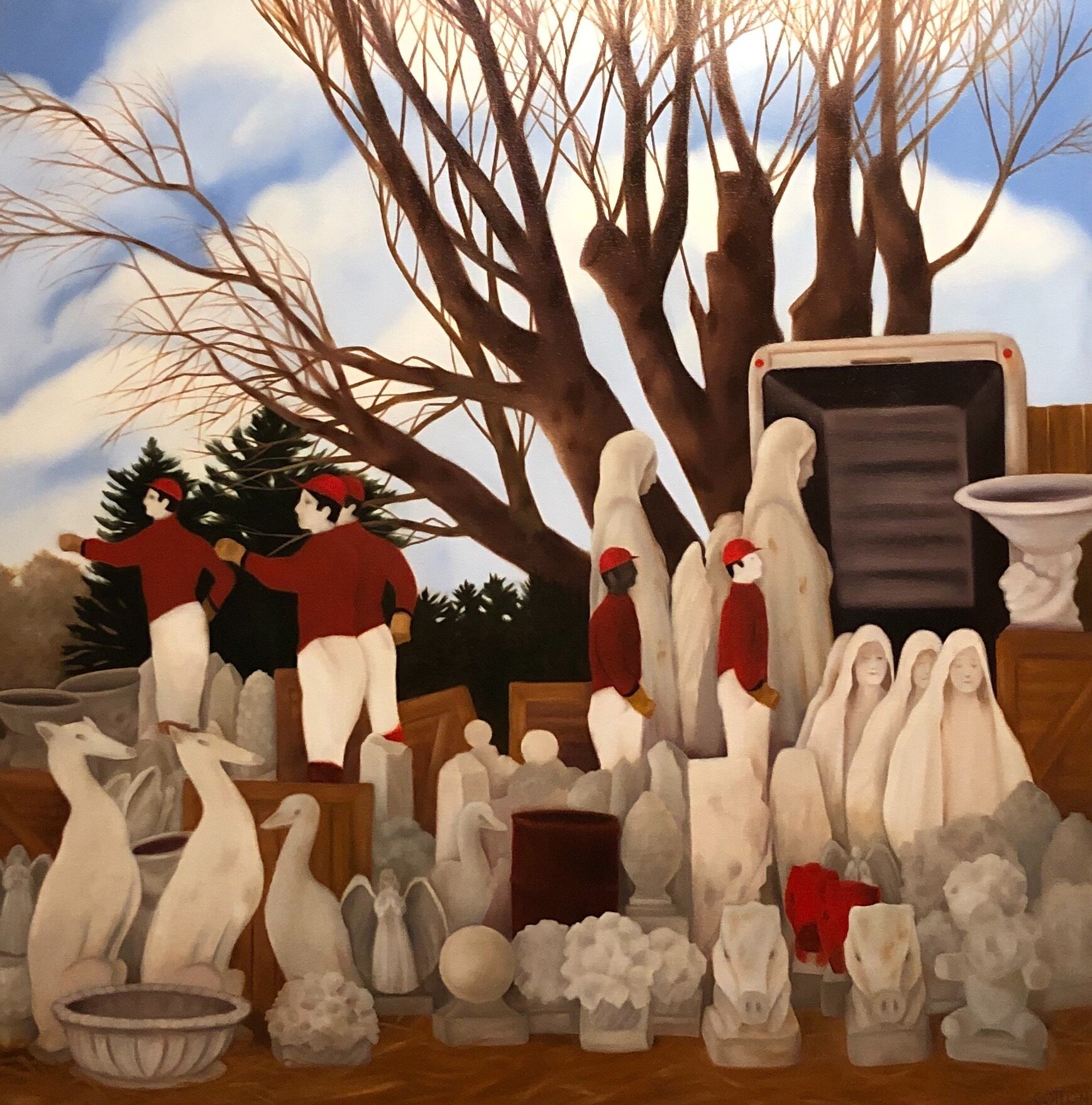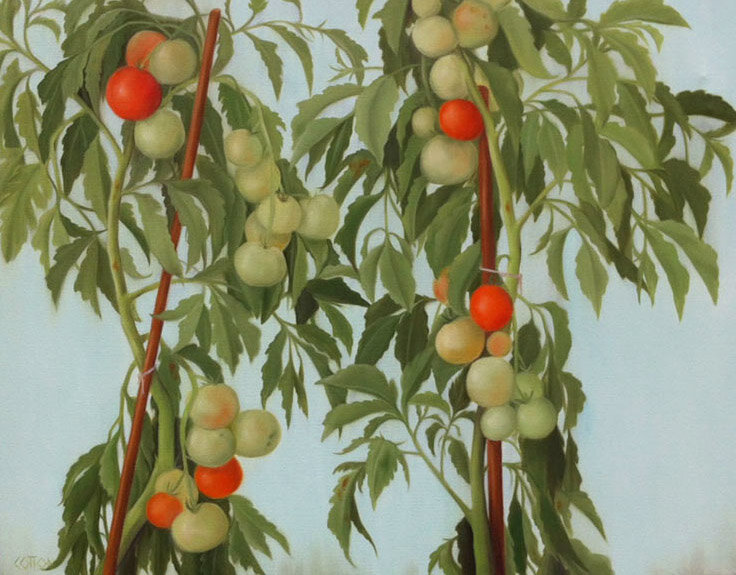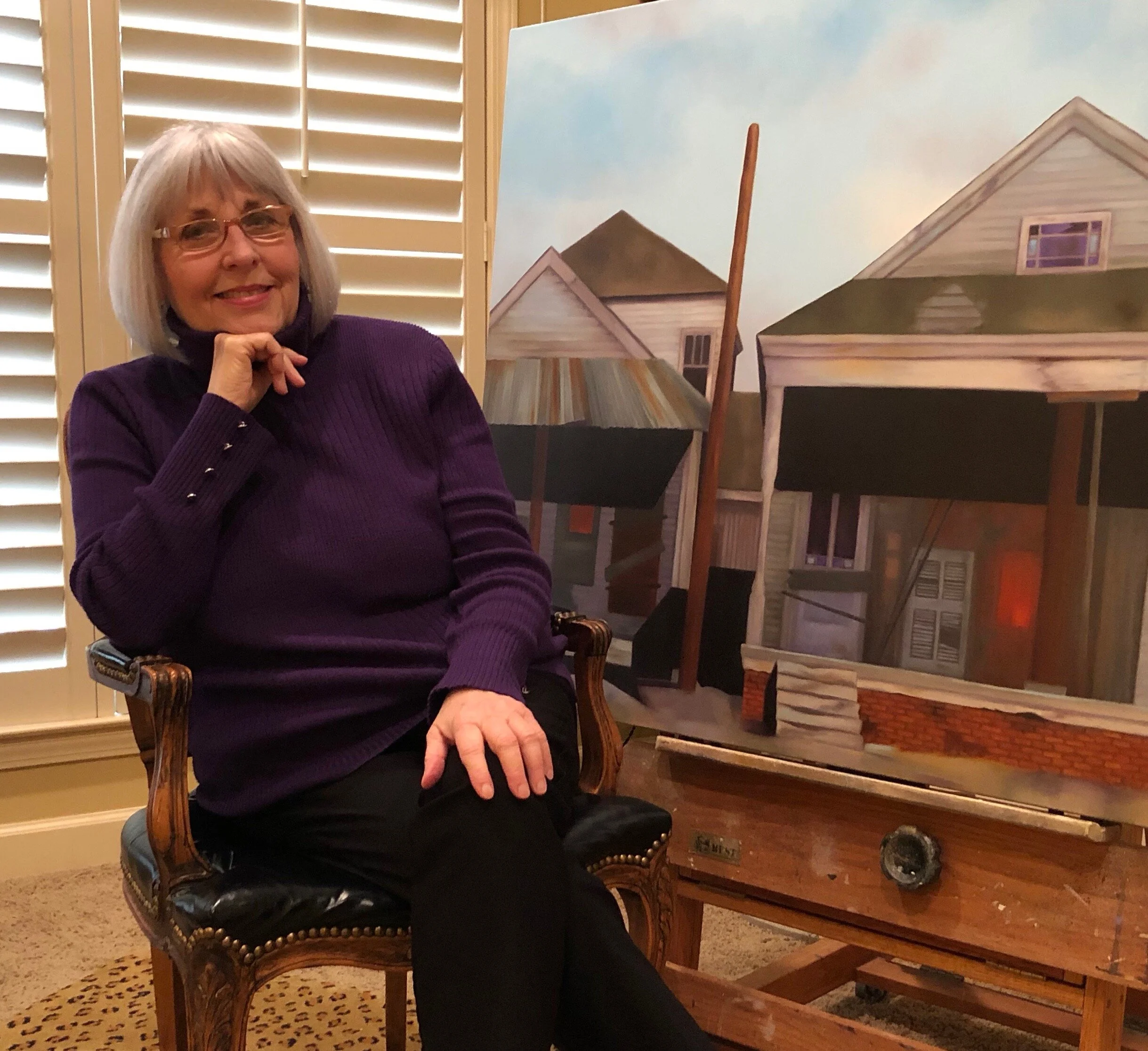Interview with artist Sheila Cotton
Sheila Cotton grew up in North Little Rock and attended the University of Arkansas at Fayetteville where she studied English. Her parents loved travel and art and by her early teenage years she was exposed to the great public art collections of New York, Chicago, and Washington D.C. At the age of 15 she spent the summer in Paris, frequently roaming the Louvre and the Jeu de Paume. All this was critical to what Cotton calls the "nurturing habit of art".
In 1968 she left Arkansas, spending her adult life in Canada and Florida. She worked in book publishing until her early 30's when she impulsively bought a set of Grumbacher oils, learned how to stretch a canvas, and began painting. Her first series of 20 large oils entitled "People " was acquired by the New Brunswick Museum of Canada for a two-year tour of national art galleries. From that show, Cotton has been a painter, with works now in over 40 museums and corporate collections. In 2008 she moved permanently to Little Rock and embarked on a new body of work inspired by rural Arkansas.
My husband and I first met Sheila in 2008, when she was still living in Naples, Florida. We had just bought one of her paintings and (long story short) had the opportunity to visit her there. Since then we have had a wonderful friendship. It was Sheila’s encouragement that got this blog up and going!
Sheila Cotton’s works can be found at sheilacottonart.com.

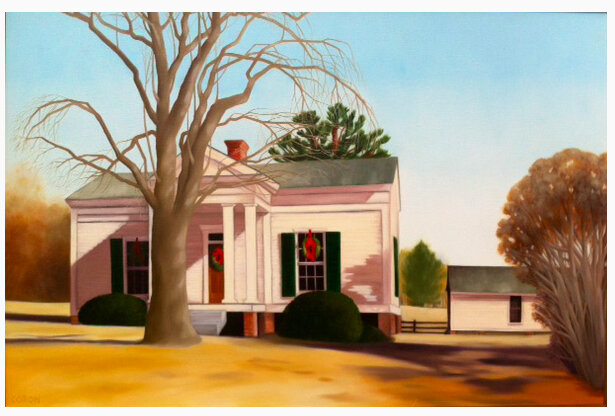

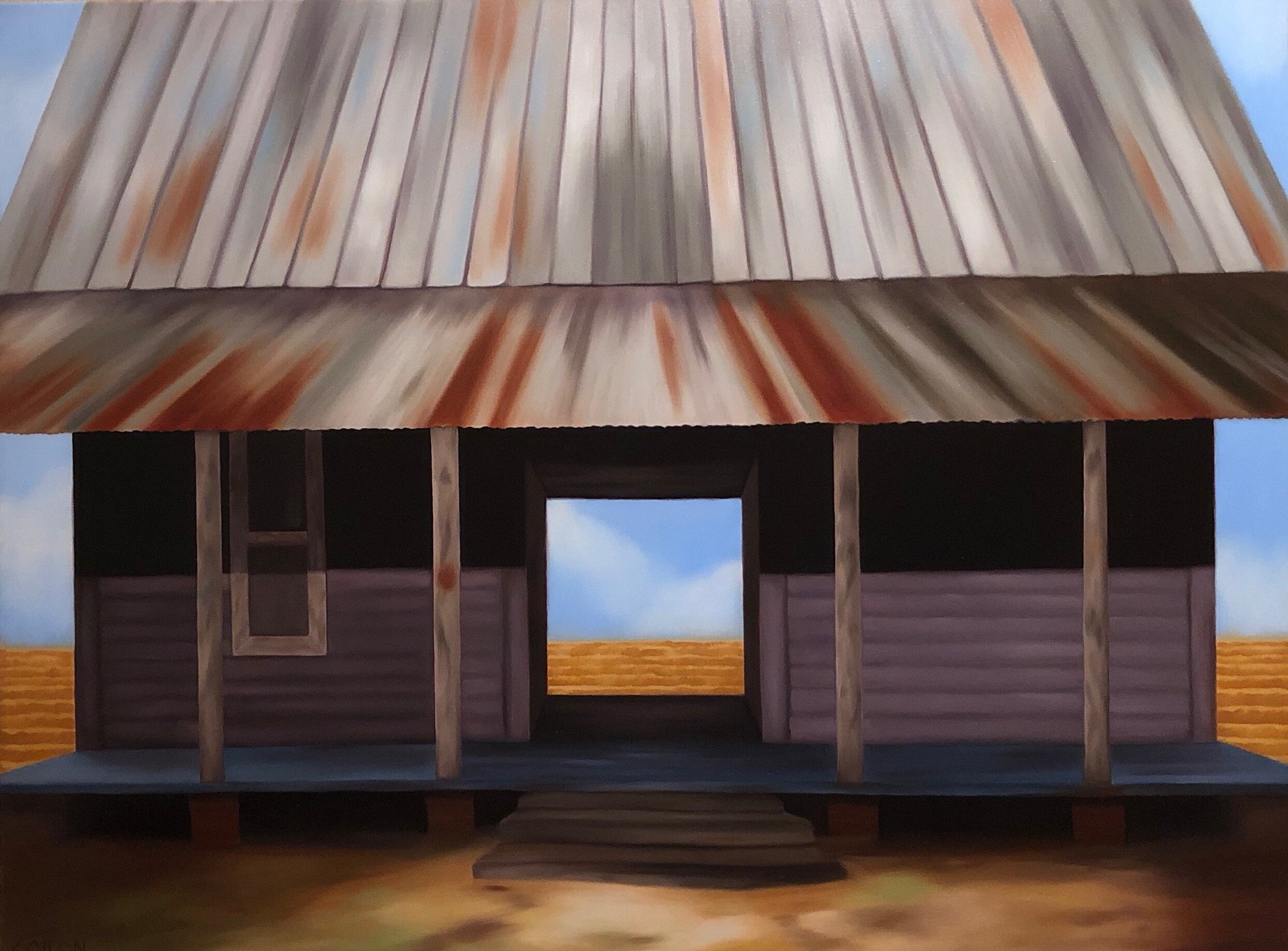
AAS: What inspires you to paint Southern landscapes?
SC: The landscape genre itself has a purity and directness that attracts me. You just open your eyes and there it is, the Earth, waiting to be acknowledged, to be grasped – and it is definitely the South that bewitches me. It has a muted, modest sort of essence. I love the colors of dirt and rust and shadow. I had painted only a few Arkansas pieces when I suddenly noticed, whoa, this is very Wabi Sabi – you know, the Asian notion of beauty in decay and imperfection. There is a lot of Wabi Sabi in my work.
AAS: Has oil always been your medium of choice?
SC: Oh, yes. For me, no other medium remotely matches oil's sublime, organic richness. I'm a terrible snob.
AAS: Although you describe your style as realism, your paintings have a mystical quality. Is that intentional?
Deep in the Delta, oil on canvas, 30” x 20”
SC: I'm grateful for that. While grounded in a little world of fields and ditches and trees and such, my images are essentially a made-up thing, a make-believe cosmos with my own cast of mind permeating the mood, a certain cinematic selection, a higher drama. When I see something, say a rusted irrigation pump in a rice field or a luxurious green crop of corn, I'll take a few photographs, then once in the studio, usually the paintings paint themselves. Very few artists can be unaware of this exalted transmission process.
I am definitely an intuitive artist. I dislike agendas and schools and movements. I just do my own thing and once I do what I do, it comes out looking like it does. I was an English major in college and value literature perhaps even more than I do the visual arts, so I am not a product of a four-year arts school sensibility.
AAS: The South is mysterious and that comes out in your paintings. Do non-Southerners get it?
SC: There are plenty Southerners who don't get it, never mind those "from away". But strong work exists on its own terms. The particulars of a given landscape are just portals, you might say, to a deeper recognition. You don't have to be Tahitian to keenly experience Gauguin's Polynesian scenes. Both for the artist and the viewer, it's all about attentiveness to life.
Sheds, oil on canvas, 16” x 40”
AAS: For me, being from the South, landscapes and especially architecture of the South, conjure up specific memories - childhood and more recent. The South has that kind of ‘look’ that you never quite forget.
SC: Childhood is constantly ensnaring us! As a Realist painter preoccupied with a specific region, there is an immense reservoir of collective experience my work taps into. I mean, isn't there a water tower or pecan grove in every southerner's childhood? But foremost I try to defeat the cliché and render the ordinary into the magical.
AAS: What is it like to be in collections from Canada to Florida?
SC: Delightful, deeply satisfying, and the older I get, quite sobering. I am physically long gone from these places yet my work to this day is hanging in a museum or boardroom or over someone's fireplace. "Art is long, Life is short".
“..and it is definitely the South that bewitches me. It has a muted, modest sort of essence. I love the colors of dirt and rust and shadow.”
AAS: You have done a fair number of commissions. Is that something you like to do?
SC: Very much. I take pleasure in commissions and have enjoyed - knock on wood - only good situations, but I choose carefully. Art history is filled with hilarious catastrophes, lawsuits and tantrums... I 'm especially fond of Whistler's meltdowns.
Commissions are like a lovely present with a price attached. Be they corporate or medical or private, the procedure brings additional anxiety into the creative process. I want flow and freedom, but still one must "perform ". This discipline and getting the job done is no more than what millions of non-artists must do in jobs and careers, but for an independent artist, it's a confounding challenge. Museum purchases are great, but let's face it, a huge percentage of museum holdings are forever stashed away in vaults. A commission for a hospital or office or hotel can be viewed every day for years.
“The particulars of a given landscape are just portals, you might say, to a deeper recognition.”
AAS: Your landscapes have a soothing quality. Maybe that is why you are collected by many hospitals and medical facilities around the state. They like placing your paintings in patient waiting rooms. That must be gratifying?
SC: There is a stillness in some, yes, you're right. Perhaps it's a reflection of temperament, as I think artists are always autobiographical. I'm pretty laid back. In my images and concepts, I like a dash of tension but not agitation.
Antique Shop, oil on canvas, 36” x 60”
AAS: Although you were brought up in North Little Rock, you spent most of your adult life in Canada and Florida. What brought you back to Arkansas?
SC: I was living in Naples, Florida when my parents died there and my husband was diagnosed with a fatal disease. I developed an abrupt, overwhelming desire to live anew in the South. I think the phenomenon is called natal homing, only I'm not a sea turtle or salmon compelled to return to the place of birth to lay eggs! I had a really bad case of Homesickness. A deep yearning for certain memory-laden things like blue hydrangeas and purple hull peas and wood smoke and a culture linked to agrarian cycles, even in urban centers.
It both distresses and regales me to remember myself as a young girl, at my bedroom window at night, gazing out to the moon and stars and praying, please God, get me out of here, I can't stand this place, I want the World! And I found it, like in an old folktale.
